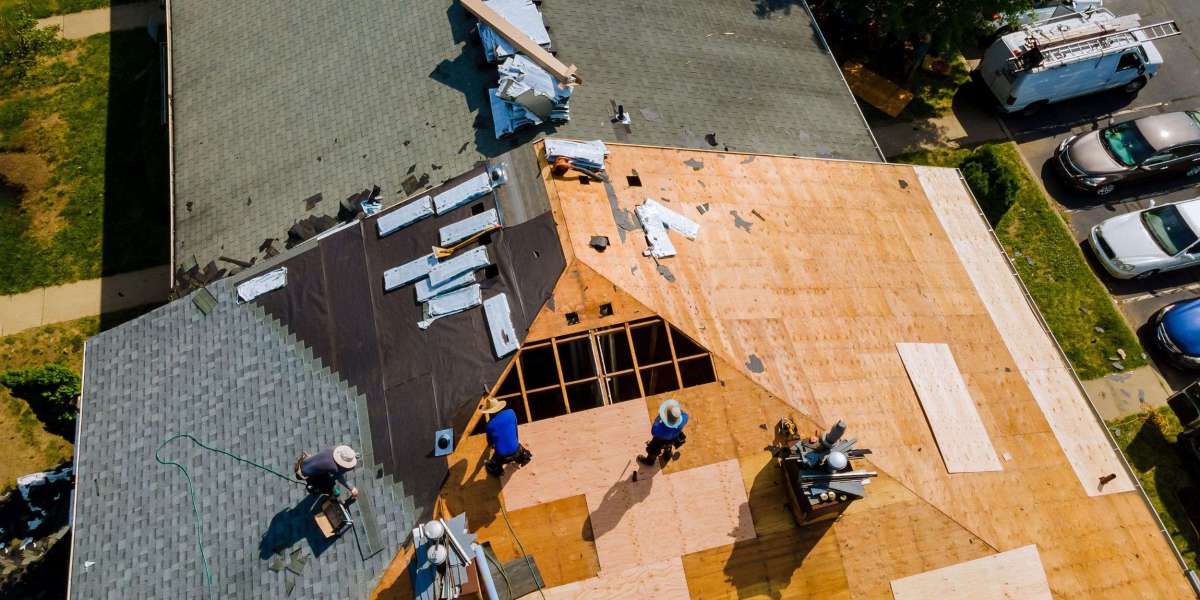Choosing the right team to look after your roof in Scotland’s capital starts with understanding the local context, weather, building age, and stonework details all shape what “good” looks like. From tenement blocks in Leith to townhouses in New Town, roof structures range from slate-pitched to flat felt and single-ply systems. A reputable Edinburgh roofing company will begin by asking about the building’s age, prior maintenance, insulation levels, and any leaks after heavy rain or frost. They should also be familiar with how freeze-thaw cycles and wind-driven rain affect ridge lines, flashings, and gutters. Expect clear discussion of safety set-ups, whether that’s scaffolding, mobile towers, or rope access for tight closes. Good contractors share photos or video from inspections, explain defects in plain language, and map remedies to budgets and timelines. You’re not just buying slate replacement; you’re buying diagnosis, sequencing, and warranty support that keeps your home watertight through Edinburgh’s seasons. Start with firms that show up on time, document issues, and give options, not ultimatums.
What To Expect From a Survey
A thorough roof survey is your foundation for smart decisions. Professional assessors should check external coverings, underlay, fixings, ridge and hip tiles, leadwork, chimneys, vents, skylights, gutters, and downpipes. Inside, they’ll look for staining, damp patches, and daylight in the loft that signals slipped slates or failed felt. Moisture readings and thermal images help pinpoint hidden problems such as condensation or poor ventilation. The best Roofers in Edinburgh will provide a written report with photos, risk notes, and priority ratings so you can separate “must-do now” items from “plan-for-later” improvements. If access is limited, ask how they’ll ensure safety and visibility, drones can supplement close inspection but shouldn’t replace hands-on checks. The survey should end with a clear conversation about repair versus replacement, lifecycle costs, and how weather windows affect scheduling. When you can see the defects, understand the causes, and compare options in consistent language, you’ll avoid surprises and be ready to request like-for-like quotes from multiple firms.
How To Compare Quotes Fairly
Roofing quotes vary because scopes, access, and material choices vary. To compare apples with apples, ask each contractor to price the same specification: slate type and grade, underlay class, fixing method, lead code for flashings, membrane for flats, and gutter materials. Insist on line-item clarity for labour, materials, waste removal, and access. Request warranty terms for products and workmanship, including who underwrites them and the conditions that keep them valid. A strong quote explains contingencies, what if rotten timbers appear under the sarking, or a chimney needs additional repointing? Good companies define day rates or unit prices for such discoveries instead of vague “to be agreed” wording. Make sure timelines include setup and cure times for adhesives or coatings, and that weather allowances are realistic. If a bid seems unusually low, probe whether it excludes scaffolding or uses cheaper imported slates that won’t match your existing roof. Transparent pricing, documented methodology, and clear communication are better predictors of value than headline cost alone.
Materials That Suit Edinburgh’s Climate
Edinburgh’s climate is cool, wet, and windy, which means materials must resist water ingress and mechanical stress. For pitched roofs, high-quality natural slate remains the benchmark for longevity and aesthetics on traditional buildings. Ask about provenance, thickness consistency, and testing standards; better slates resist delamination and colour change. On flats, modern single-ply membranes and liquid-applied systems offer excellent waterproofing, but installation quality determines performance, substrate preparation, edge detailing, and upstand heights are critical. Lead flashings still outperform many alternatives when sized correctly, though there are proprietary systems where theft risk or weight is a concern. Ventilation and insulation choices should balance condensation control with energy efficiency; consider vapour control layers and breathable underlays in the right combination. Gutter capacity and fall are often underestimated; oversizing downpipes and ensuring leaf management can prevent avoidable overflows. A knowledgeable contractor will align materials with your building’s exposure, height, and heritage constraints while explaining service life, maintenance needs, and total cost of ownership.
Planning Permission and Building Standards
Edinburgh’s historic fabric and conservation areas mean roof works can have regulatory implications. Minor like-for-like repairs often fall under permitted development, but alterations that change appearance, such as switching from slate to tiles, adding rooflights, or altering ridge profiles, may require permission. Listed buildings and properties in conservation areas face stricter controls, and compliance with Scottish Building Standards still applies for structure, fire safety, and energy performance. A competent contractor will advise when you need approvals and can coordinate drawings, specifications, and method statements to support applications. Building control may also inspect insulation upgrades, ventilation strategies, and structural alterations, especially if rotten timbers demand replacement. Keep paperwork tidy: survey reports, photos, manufacturer datasheets, warranties, and scaffold tags help demonstrate due diligence. Timelines should account for approvals and inspection slots; compressing schedules by skipping permissions risks enforcement action and costly reversals. The right partner treats compliance as a core deliverable, not an afterthought, ensuring your project is both legal and durable.
Signs You Need Urgent Repairs
Some roof issues tolerate scheduling; others demand immediate attention. If you see active leaks during rain, brown stains spreading on ceilings, bulging plaster, or damp smells in the loft, you’re beyond “monitor and wait.” Externally, slipped slates, missing ridge tiles, cracked lead at valleys, and ponding on flat roofs all signal risk. After storms, check for debris in the garden and grit in gutters, these can hint at accelerated wear. Thermal loss in winter or sweltering lofts in summer may indicate ventilation problems that, left alone, breed condensation and timber decay. Reputable contractors will triage hazards first, making safe loose elements, fitting emergency tarpaulins, or clearing blocked outlets, before returning for permanent repairs under better weather. Transparent communication about what’s urgent versus cosmetic helps protect both interiors and budgets. If you’re unsure, a quick diagnostic visit beats months of escalating damage. Knowing the early warning signs and acting promptly turns major structural threats into manageable maintenance tasks.
Long-Term Maintenance and Warranties
Roofs last longer when they’re maintained, documented, and reviewed on a predictable cycle. Annual or biannual inspections catch small issues before they become big ones, think slipped slates, perished sealant at penetrations, or leaf build-up starving outlets. Keep a log with dates, photos, and notes so you can correlate cold snaps or storms to issues and preserve warranty validity. When a contractor completes work, expect a handover pack: manufacturer warranties, workmanship guarantees, maintenance guidelines, and before-and-after imagery. Ask how to keep cover active, some warranties require periodic inspections or use of approved materials for touch-ups. If you prefer a single point of accountability, consider a maintenance agreement with a trusted local firm; predictable costs and priority call-outs can be cheaper than crisis-driven repairs. Homeowners across the city have found value in engaging Edinburgh Borders Roofing for scheduled check-ups alongside repair work; concentrating history and responsibility with one provider simplifies planning and ensures consistent workmanship over time.
Why Local Expertise Saves You Money
Local knowledge pays for itself. Contractors who work daily across the capital know which tenement details trap water, how wind swirls around Arthur’s Seat to drive rain into certain elevations, and which slates best match neighbourhood aesthetics. They also understand access quirks, narrow closes, shared back greens, and scaffold positions that minimise disruption. Choosing specialists with Edinburgh-specific experience means better diagnoses, fewer callbacks, and materials that truly fit your building’s microclimate. When an Edinburgh roofing company outlines not just what they’ll do but why it suits your street and stonework, you’re buying fewer unknowns. The best Roofers in Edinburgh bring relationships with local merchants and waste handlers that keep programmes efficient and compliant. If your home needs targeted Edinburgh roof repair, seasoned professionals will phase works around weather windows and tenant needs, protecting interiors while the roof is opened. For many homeowners, partnering with a proven local team, such as Edinburgh Borders Roofing, has delivered predictable timelines, clear communication, and durable results that hold up through the city’s toughest winters.
Choosing Repair or Replacement
Deciding between repair and full replacement depends on defect patterns, roof age, and future plans. Localised failures, like wind-lifted slates, cracked flashings, or punctures in a flat membrane, often justify targeted fixes, especially when the rest of the covering is sound. But repeated leaks across different areas, widespread nail sickness, brittle underlay, or structural timber decay can make patching uneconomical. A robust cost–benefit analysis weighs immediate spend against the risk of continued disruption, interior damage, and re-scaffolding later. Replacement can unlock thermal upgrades and modern ventilation strategies that lower bills and reduce condensation. Conversely, repairing keeps character slates in place and preserves embodied carbon. Ask your contractor to present both paths with lifecycle projections, disruption timelines, and warranty terms. When you see the numbers and the likely outcomes side by side, the “right” answer usually becomes obvious. What matters most is transparency: a contractor who can justify their recommendation with survey data, photos, and clear assumptions is the partner you want on your roof.
Preparing Your Home and Household
Good preparation makes projects smoother and protects belongings. Clear loft storage below work zones and cover items that can’t be moved. Indoors, remove fragile wall hangings beneath areas where hammering might cause vibration. Outside, move cars and garden furniture away from scaffold zones and provide access for skips if needed. Tell neighbours about planned works, especially in shared stairwells, and coordinate with factors where common parts are involved. Ask your contractor how they’ll handle wet weather; reputable teams plan for sheeting, temporary sealing, and daily clean-downs. Agree on working hours, noise expectations, and who locks up the scaffold gate. Provide contact details for someone who can make decisions during the day to avoid delays. Finally, set aside a small contingency budget; even with the best survey, hidden issues sometimes surface once coverings are lifted. Preparation isn’t glamorous, but it reduces stress, shortens programmes, and helps ensure your roof is back to full strength with minimal disruption to daily life.
Aftercare: Keeping Your Roof Future-Ready
Once the project wraps, aftercare protects your investment. Review the handover pack and calendar the first inspection date. Walk the perimeter after storms to check for debris, and keep gutters clear to preserve falls and prevent standing water. If you notice new noises in wind, damp odours in the loft, or stains appearing, contact your contractor promptly, warranty periods are there to be used, not ignored. For properties with tenants, give them a simple checklist of things to report and a number to call for emergencies. Consider periodic drone imagery if access is awkward; paired with on-roof checks, it builds a visual history that speeds decision-making. Over time, you’ll learn your building’s patterns and can plan interventions before they interrupt life. With a trusted partner in place, you’ll spend less time reacting and more time enjoying a warm, dry home that stands up to Edinburgh’s weather. Thoughtful aftercare is the final step in a successful roofing project, and the one most homeowners skip.



